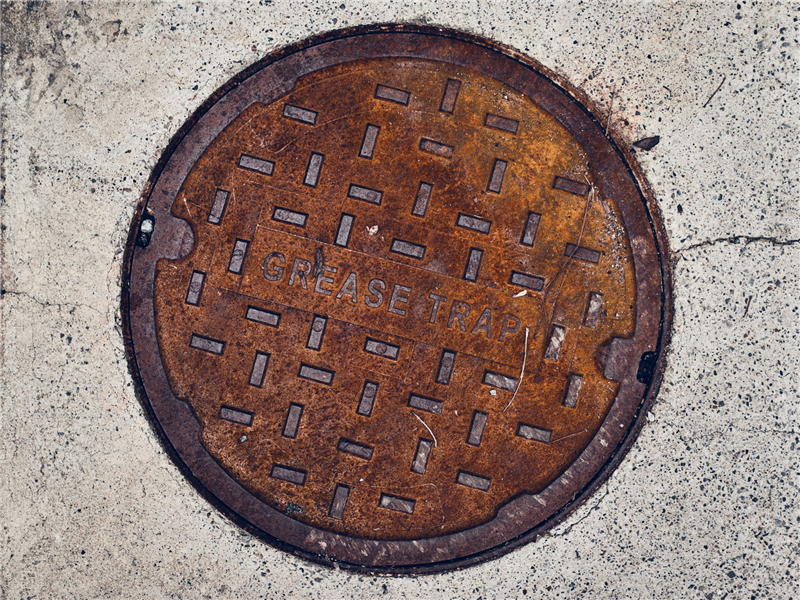
Grease trap waste management systems are vital in commercial hot food kitchens in the UK. They stop fats, oils and grease (FOG) from reaching the municipal sewer system and causing dangerous blockages that are difficult to remove and can lead to downtime for those that rely on the blocked pipe for their wastewater disposal, and their neighbours.
Water companies have long been trying to tackle the issues caused by FOG clogs and, as with many situations, have deemed that prevention is better than cure. This is why commercial premises that deal in hot food preparation and cooking must now have a grease trap installation by law.
FOG legislation as we know it today wasn’t fully implemented until quite recently. But where did the idea first start, and just how long ago did grease traps first appear in the UK? The answer might surprise you.
Grease Trap Waste Management Throughout History
The inventor of the grease trap is lost to time, as the basic concept of a grease trap dates back centuries. But there is evidence of grease trap installations in ancient civilisations such as the Greeks and Romans, built around the same basic science of using gravity to separate grease and other solids from wastewater.
The modern grease trap as we know it was developed in the late 19th century. The first patent for a grease trap was issued in the United States in 1884 to Nathaniel Whiting, who coined the name ‘grease trap’ on his patent, but his invention was not immediately widely used. By the early 1900s, sewerage regulations were becoming more stringent, and there was suddenly a much larger demand for effective grease traps.
In the UK, grease trap installations have been steadily rising in number since at least the early 1900s, used primarily to prevent the build-up of FOG in the primarily Victorian-built sewer systems of the day. The early grease traps were basic, often consisting of a simple metal box, or tank, that captured FOG before it could pass into the sewer system. Over time, the early, more basic grease trap systems were refined and improved to be more efficient and better meet the needs of both businesses and the environment.
Recent Grease Trap History and Changes in the Law
The introduction of legislation related to grease traps in the UK started with the Water Industry Act of 1991. The act sought to protect the quality of water resources by ensuring the proper treatment of wastewater before its discharge back into the environment and included requirements for controlling FOG. In 2003, the Environmental Protection Regulations further strengthened regulations relating to FOG control and established guidelines for designing and installing grease traps.
Grease Trap Technology Today
Grease traps are now a common sight in commercial kitchens throughout the UK, and while the specific requirements for grease trap installation may vary depending on the size of each establishment and the nature of its operations, they all share the common goal of protecting the environment and preventing FOG from entering the sewer system.
Modern grease traps are even more technologically advanced, with the introduction of automatic grease removal systems that detect and remove grease from wastewater in real time, reducing maintenance costs and improving the system’s overall efficiency.
Cutting-edge grease traps are designed to be more environmentally friendly and use helpful bacteria to break down FOG naturally, reducing the need for harsh chemicals and other pollutants.
Grease Trap Installation in the UK
Grease traps in the UK have evolved significantly over the past 120 years, becoming more efficient, effective, and environmentally friendly with innovative new technologies and design choices.
Here at Aqua Mundus, we provide the latest and most advanced grease trap solutions to commercial kitchens and restaurants across the UK. To talk to the FOG removal experts and find the perfect grease trap installation for your business, call us today on 01386 832205 or email emailus@aquamundus.co.uk.